In Quest of Old Buildings at Lake Balaton – Hop on the nostalgia train with us
How did people spend their summer holidays and the winters at Lake Balaton? What were the iconic buildings of the last century, and how did they survive? We went in quest of old buildings around Lake Balaton - with the help of Fortepan images.
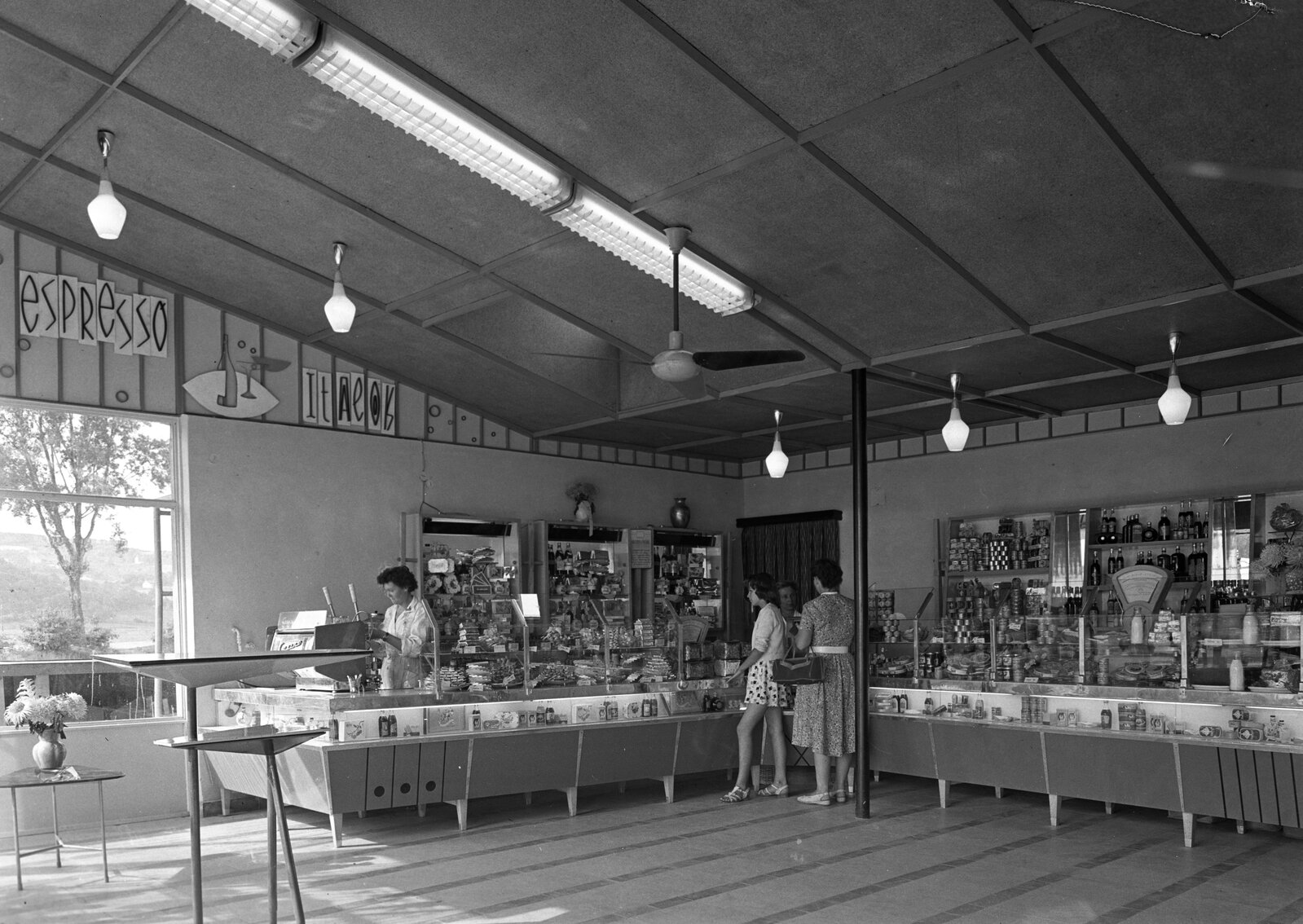
Station No. 1: Balatonalmádi – "The Floating Theatre" at Wesselényi Beach
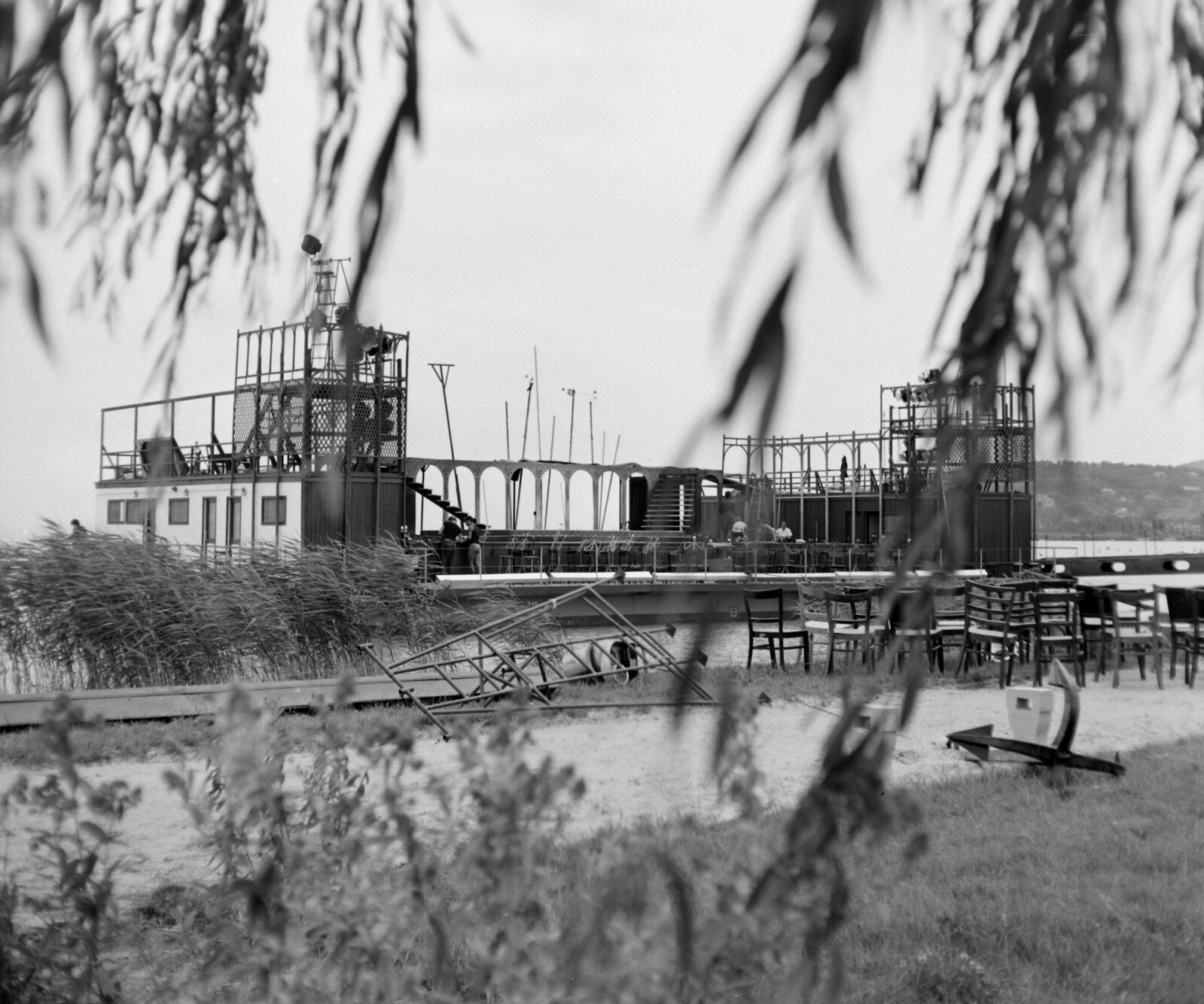
The floating aquatic stage was the idea of the Petőfi Theatre’s management in Veszprém. The stage was erected on a decommissioned pontoon of the Hungarian Armed Forces in the summer of 1963. The 1,000-seat viewing platform was on the beach. The stage was complemented by separate dressing rooms, lighting and sound rooms, a prop room, and restrooms. The premiere on the towable aquatic stage in Almádi had to be cancelled due to inclement weather, so Shakespeare's ‘A Midsummer Night's Dream’ was first performed on water in Balatonfüred. The stage soon fell into disrepair since it was not easy to store and it was far too expensive to maintain. Nobody knows who and how finally dismantled this floating monstrosity.
Station No. 2: Balatonfüred – Bathhouse
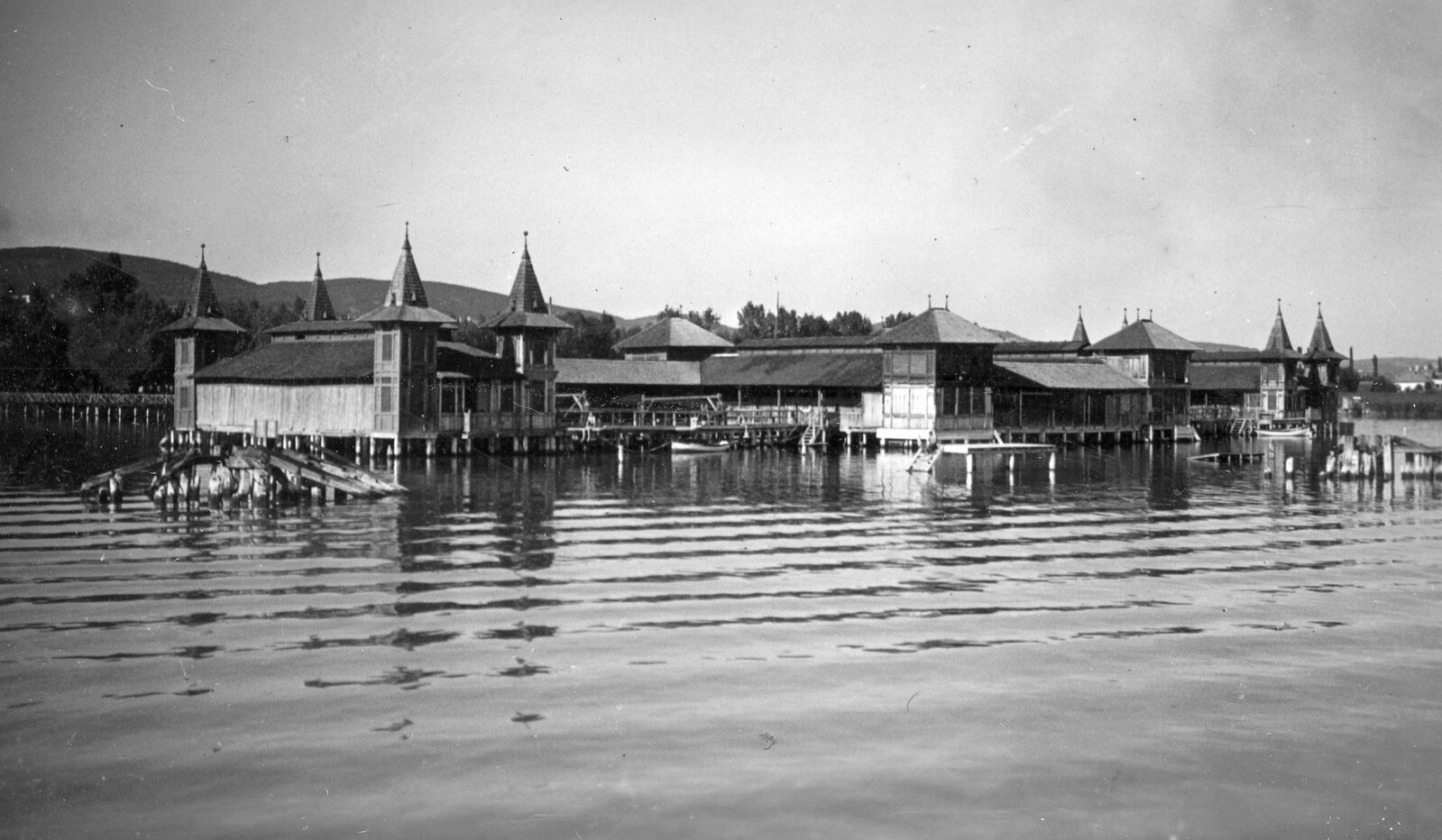
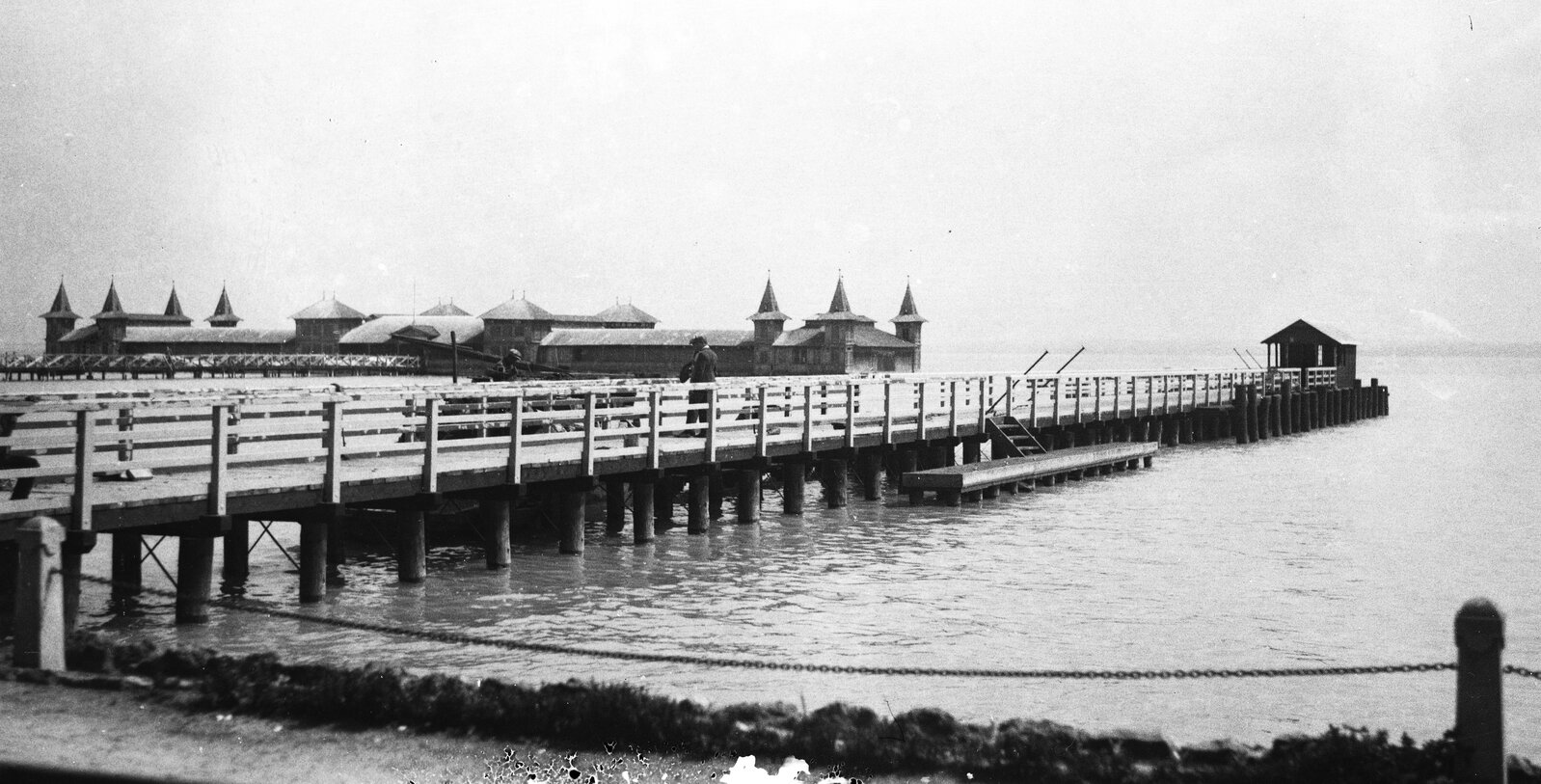
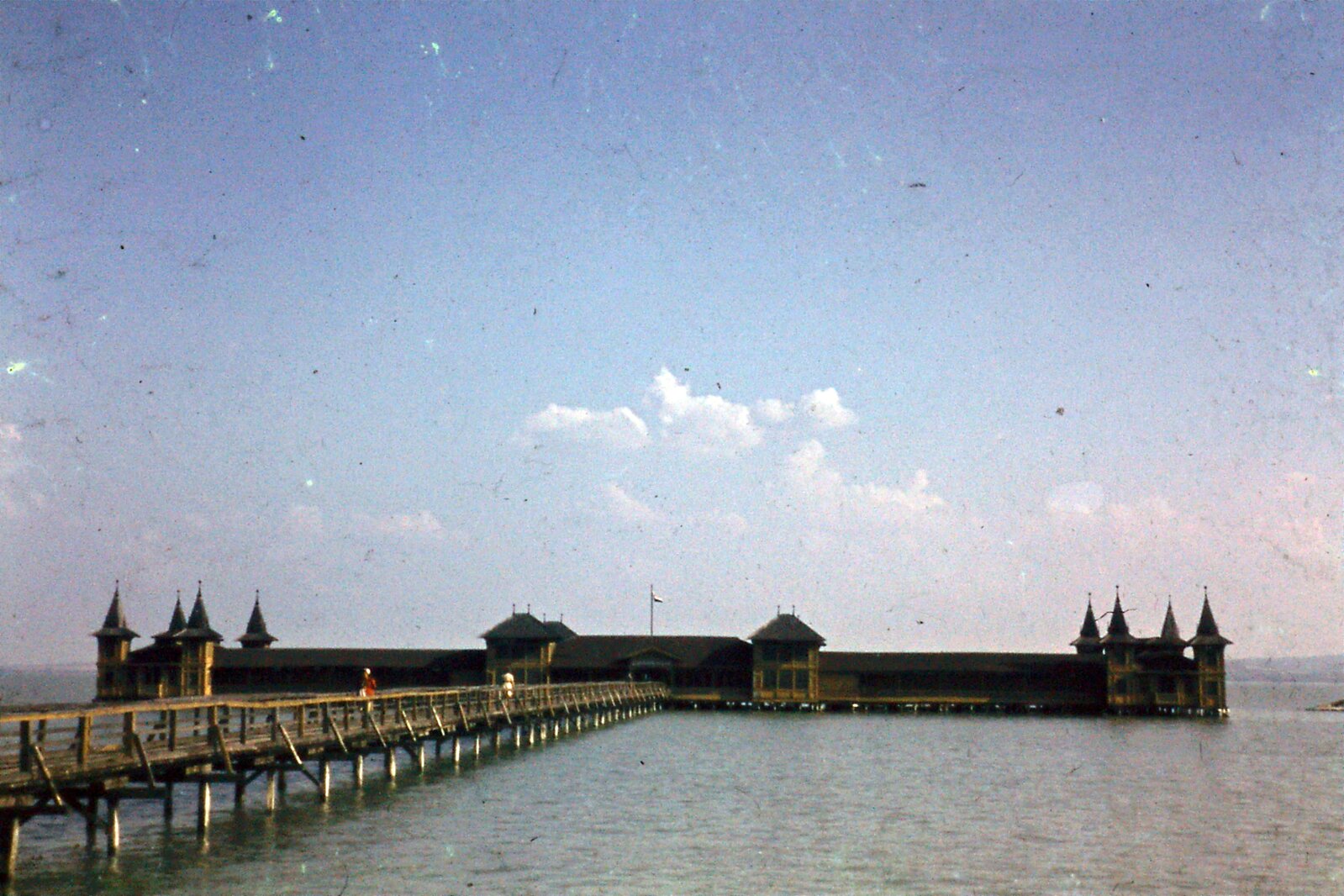
Did you know that in the 1800s, the waters of Lake Balaton were considered to have medicinal properties for various illnesses? That bathhouses were built and people sitting in specially built cabins were lowered into the lake? One of the most famous bathhouses with 12 turrets was erected in Balatonfüred in 1889. It was 100 metres long, had 90 changing rooms and an elegant waiting room. This unique building, which offered a stunning view from the shore, was destroyed by a bomb in World War II. Apart from the photographs, only a glass memorial retains its memory on the promenade.
Station No. 3: Tihany – Shopping Area at the Ferry Port
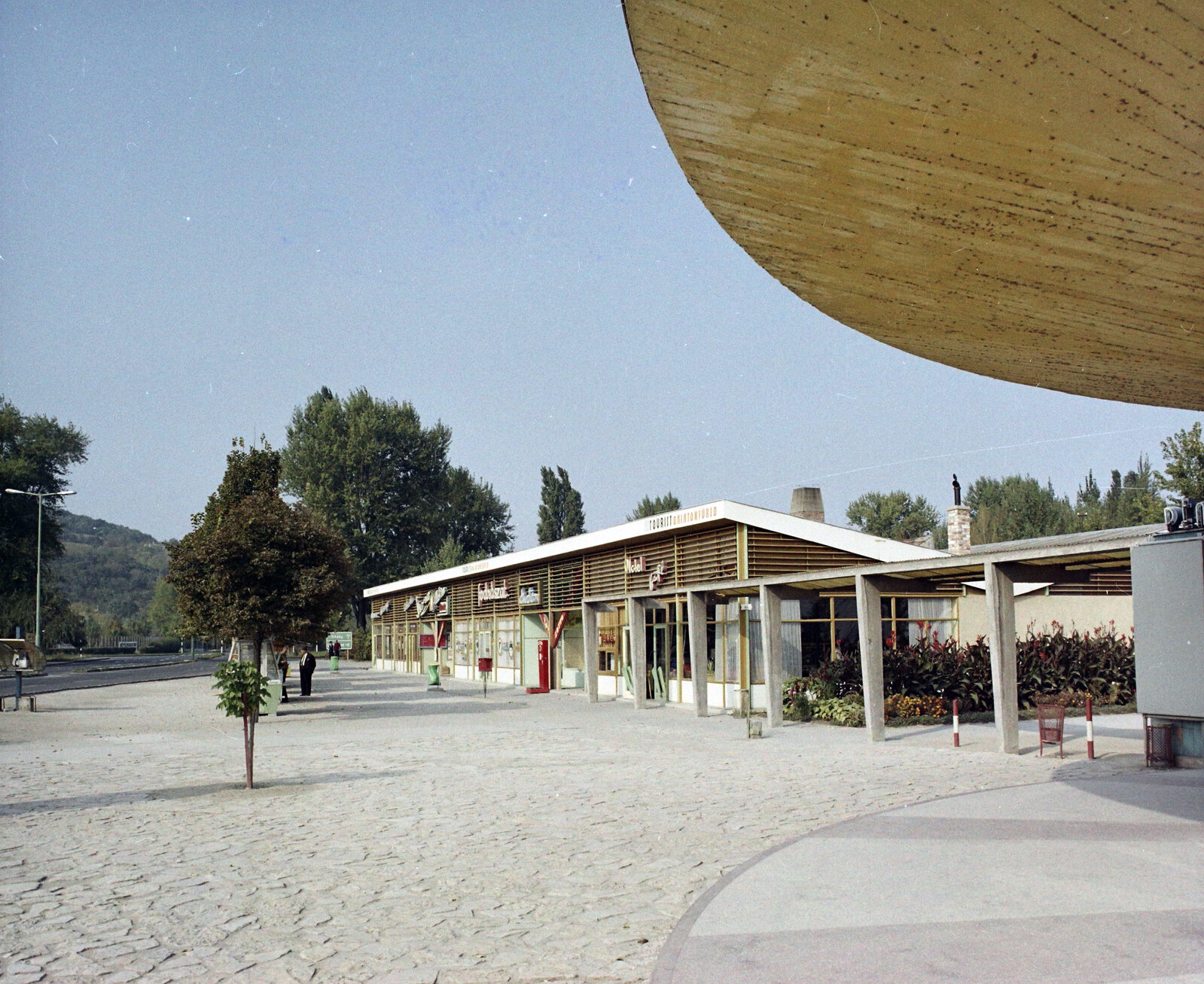
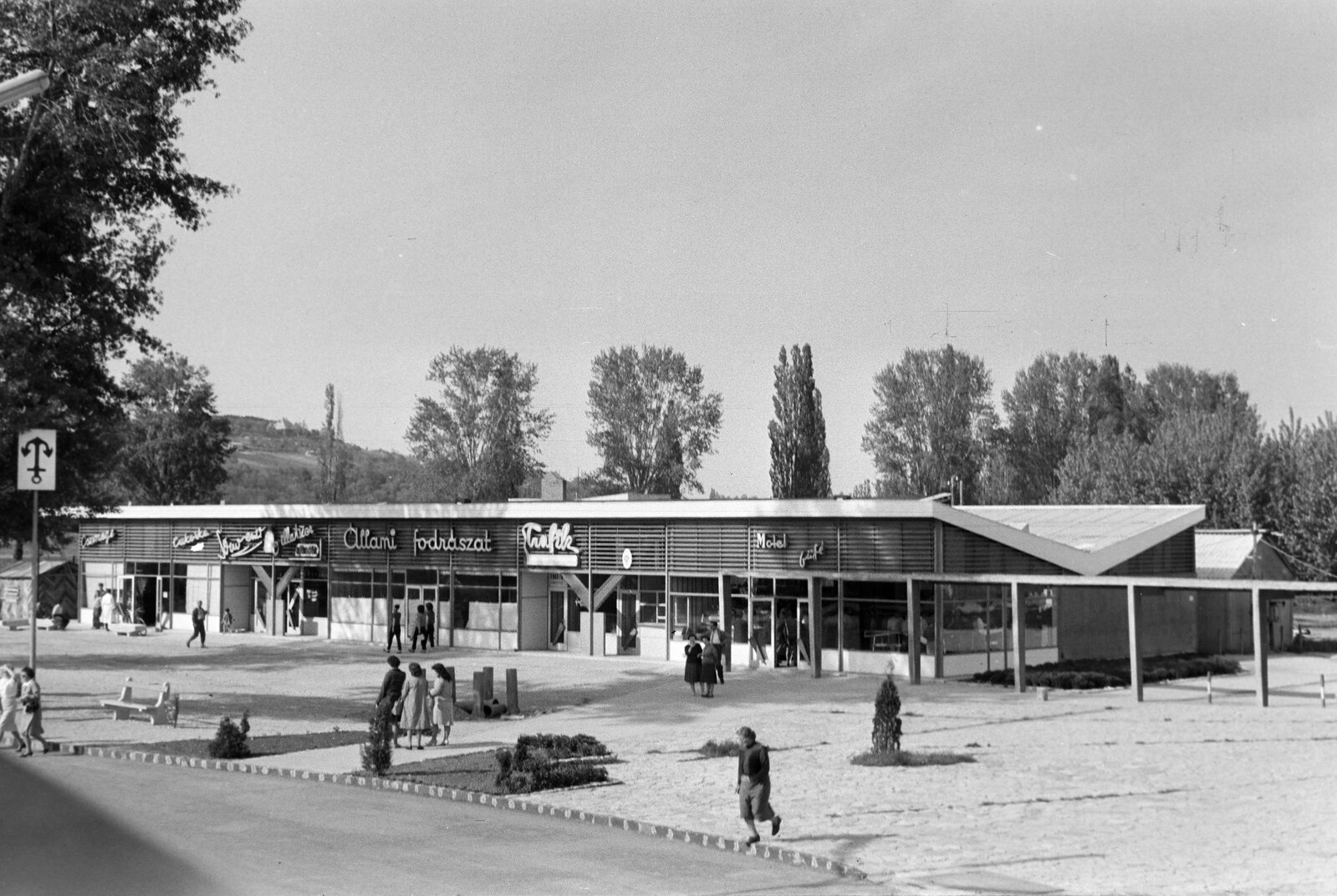
The Tihany ferry has long served as a busy traffic and crossing point on the lake. If legends are to be believed, there was a time when passenger traffic on the ferry was so heavy that the queue snaked from the ferry almost to the centre of the village. The shopping area next to the ferry was designed by János Dianóczki and extended by two designers (Messrs Jónás and Kun of ÁÉTV) in 1964. The shops in the Y-shaped building included a delicatessen, a hairdresser and a snack bar called the Motel. The building has been demolished, and a residential and commercial building is presently under construction. The area around the ferry, however, is still famous for its nearby farmers’ market.
Station No. 4: Badacsony – The ‘Tátika’ Restaurant
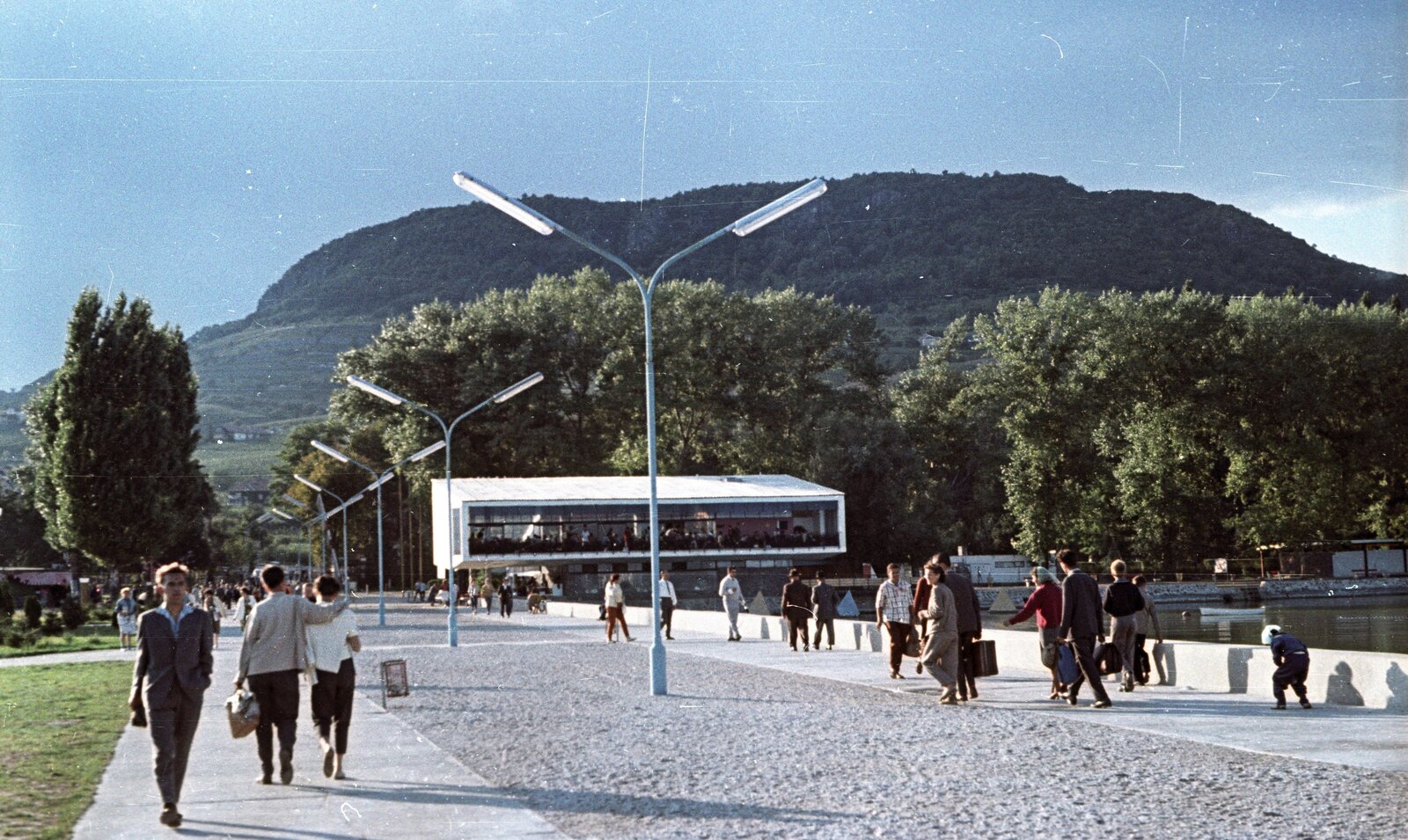
This building is somewhat an odd one out, as only the original foundations are visible at Badacsony. Unfortunately, what you can now see only faintly resembles the authentic ‘Tátika’ (Snapdragon) restaurant. The architect, Ferenc Callmeyer, designed several iconic Balaton buildings, such as Poharazó (the Wine-sipper) in Badacsony and Rege (The Legend) Confectionery in Tihany. Callmeyer initially intended the restaurant to stand directly on the waterfront, arching over the water. Since it did not withstand the winter weather, however, the area in front was filled in and used as a terrace. The former ‘Tátika’ was listed as a heritage building in 2011 and is reportedly under renovation.
Station No. 5: Balatonföldvár – Bathhouses
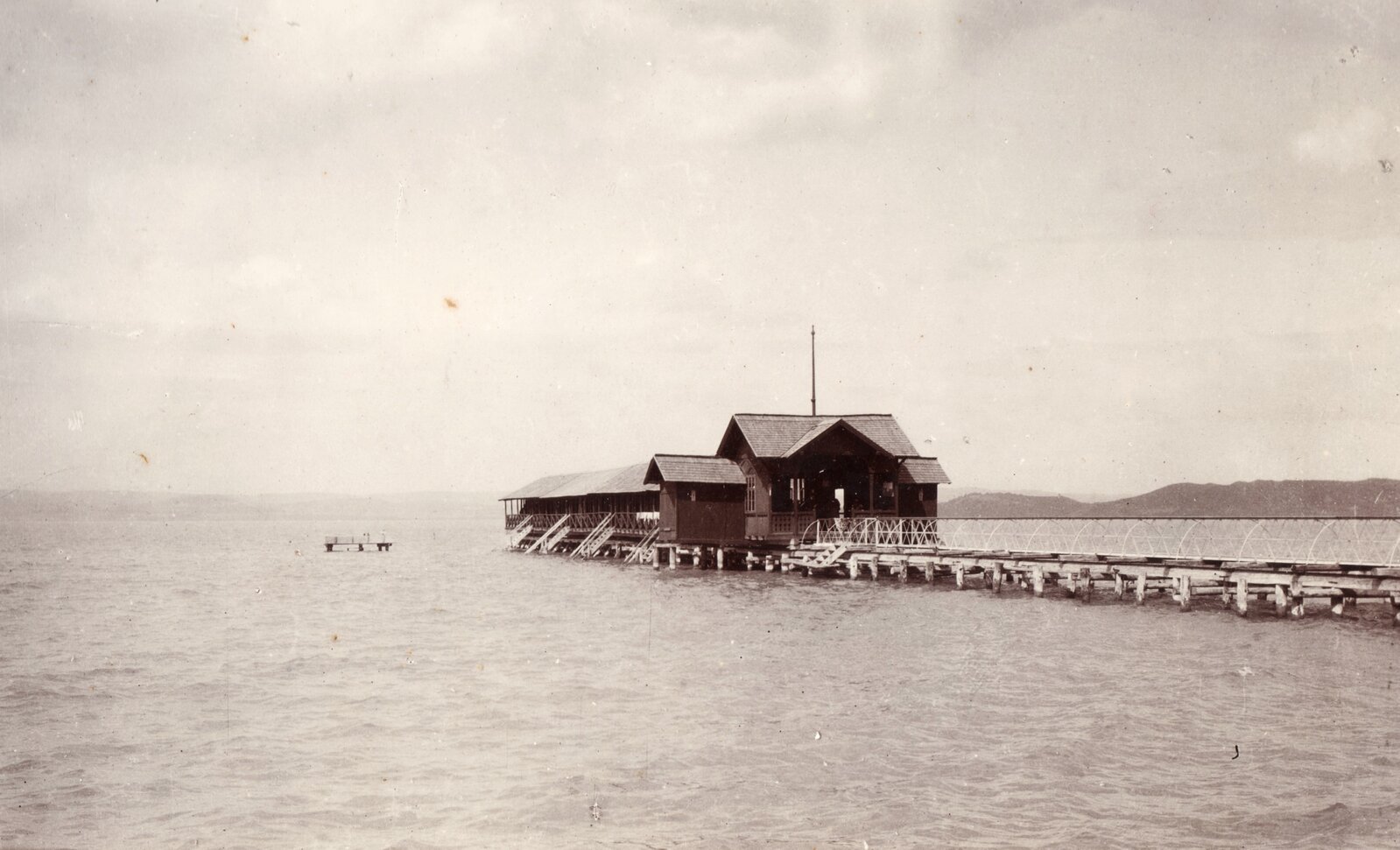
Bathhouses were not the exclusive privilege of the north shore. In Balatonföldvár, for example, they were built in the late 1800s on land owned by Count Viktor Széchényi. The bathing culture that had developed by that time left a long-lasting mark on the layout of the present-day Földvár, as it was at this time that the coastal areas were parcelled out and the bathing neighbourhood was established.
Station No. 6: Balatonszéplak – Orion Bar
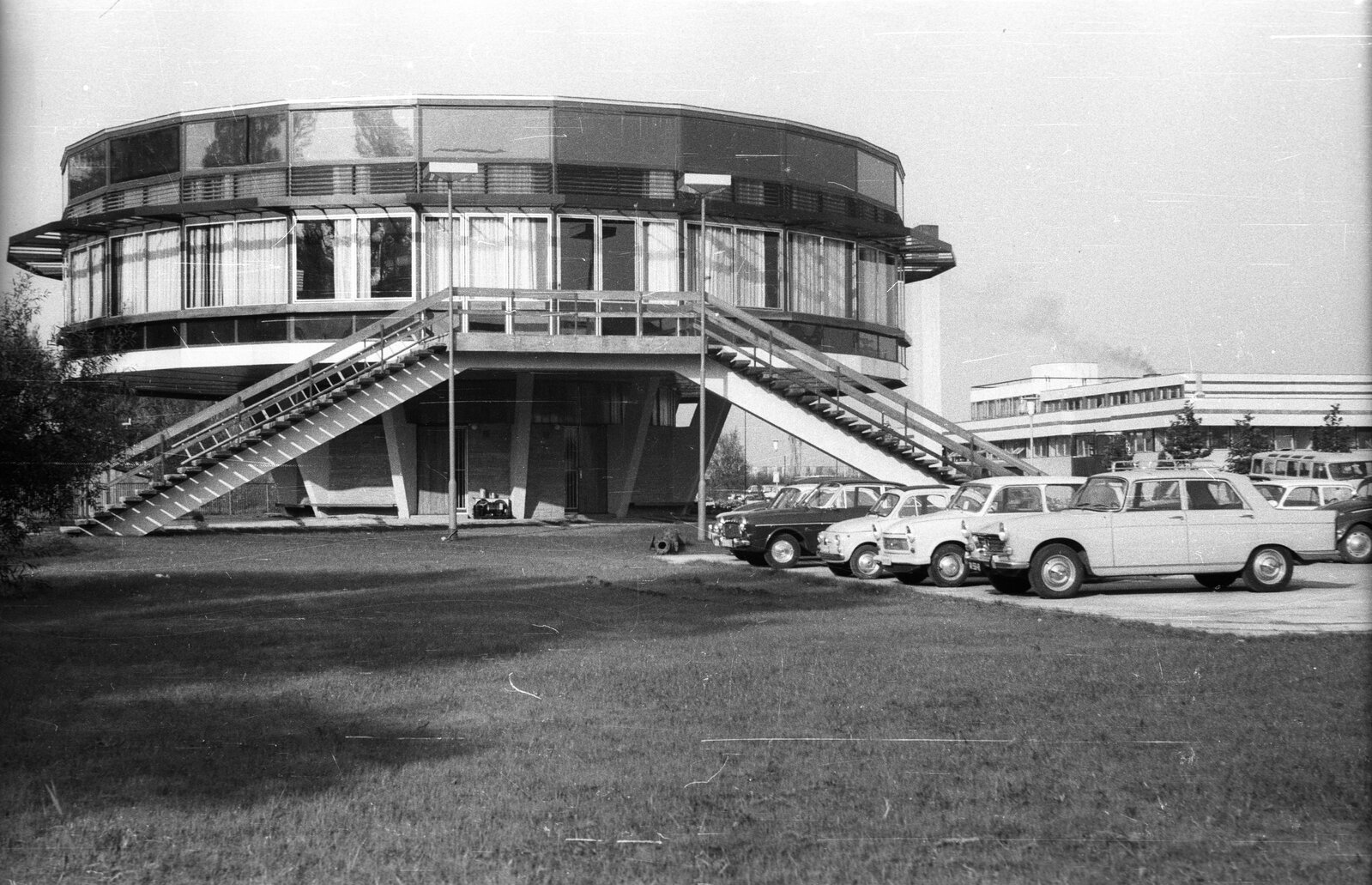
The Orion Bar was part of the resort owned by the National Association of Hungarian Journalists. It was built in 1971 based on the designs of István Márton using reinforced concrete with glass and aluminium windows and doors. According to the natives, its shape was inspired by the spaceship featured in a 1968 East-German sci-fi film ‘The Fantastic Adventures of the Spaceship Orion’. It is imprinted in the memory of locals and visitors alike as the Orion Bar. During the day, it was a meeting place for the journalist community, and even housed an exhibition hall. In the evenings, it transformed into a music bar, which was very popular in its heyday. It later became a disco and finally stood empty for years. Although there were plans to renovate it, it was finally demolished more than ten years ago.
